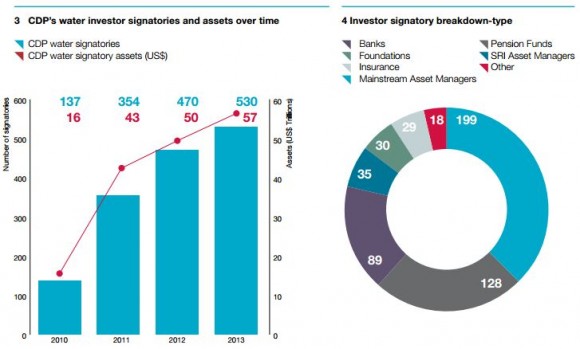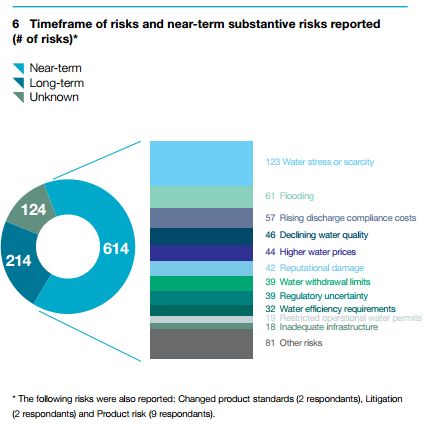Water is essential to the survival of companies, people and communities. In all, 184 of the world’s largest companies used enough water in one year to provide 50 gallons of the precious liquid to every person in today’s world for the next 21 years. With 40 percent of the world expected to face water shortages by 2030, companies and investors are ramping up their responses to global water challenges. While many have already made significant progress, much more can and must be done to turn the story of water risk into one of environmental stewardship, economic resilience and opportunity.
CDP Global Water Report
The most recent CDP Global Water Report provides a revealing window on companies’ efforts to address global water issues. CDP is an international, non-profit organization that offers the “only global system for companies and cities to measure, disclose, manage and share vital environmental information.”
CDP’s water program has quadrupled in just four years to include 530 institutional investors representing $57 trillion in assets. Once primarily the domain of a niche group of socially responsible investors (SRI), water risks and opportunities have rapidly become a focus of the ESG (environmental, social and governance) analyses of mainstream asset managers, pension funds and banks.
Business and Water
Water’s importance to business is more apparent in some industries than others. For beverage makers like Nestle, Coke, Pepsi and SABMiller, water is the unsung star ingredient and lifeblood of companies’ products. For many more companies, water often plays a key role in essential functions like cleaning and cooling. Buildings account for 88 percent of the world’s total potable water use according to Johnson Controls.
Top Water Risks
Companies responding to the CDP water questionnaire cited a total of 614 “near-term, substantive risks.” Most commonly named were “water stress or scarcity” and “flooding.” Due to supply chain disruptions caused by severe flooding, Nissan Motors’ Thailand plant lost 40,000 units of production.



